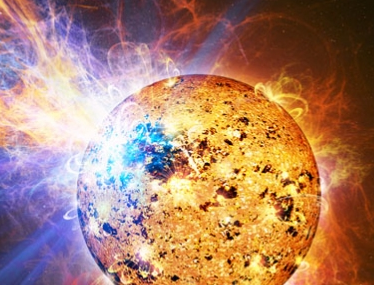Type II 'Solar Radio Bursts': Early Indicators of Weather in Space
- 11 Dec 2021
A team of scientists from the Indian Institute of Astrophysics (IIA), along with collaborators over the world, have reported that a type of solar radio bursts observed using the global network of solar radio telescopes called CALLISTO (Compound Astronomical Low-cost Low-frequency Instrument for Spectroscopy and Transportable Observatory) can be used to predict space weather hazards rapidly.
- The scientists found that a type of solar radio slow-drifting bursts known as Type II bursts serve as early indicators of incoming space weather events that could affect the Earth.

(Image Source: watchers.news)
Currently used Methods
- Forecasters use ground-based instruments and satellites to monitor the active regions of the Sun for any changes to predict hazardous space weather events.
Problem with Current Method
- This takes place mainly through remote observations of the Sun's coronal mass ejections (CMEs). However, CMEs take 1-5 days to reach us, thus delaying the tracking by that period.
How the new Method Works?
- Radio bursts at low frequencies are associated with energetic CMEs that travel far into the interplanetary (IP) medium much faster, thus speeding up the tracking process.
- The speed of the shock due to radio bursts makes their measurements possible using ground-based radio telescopes in comparison to the detection of CMEs in-situ through space-based telescopes 1-5 days later.
| Solar Radio Bursts
CALLISTO Spectrometer Network
|



